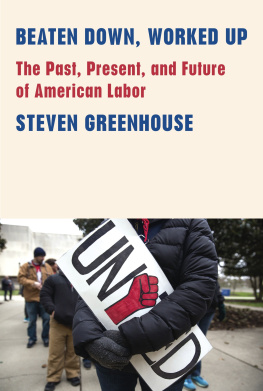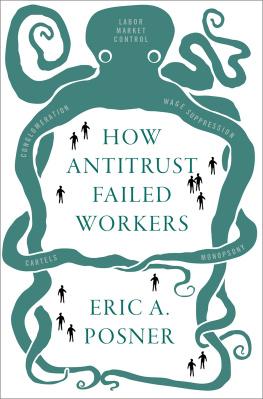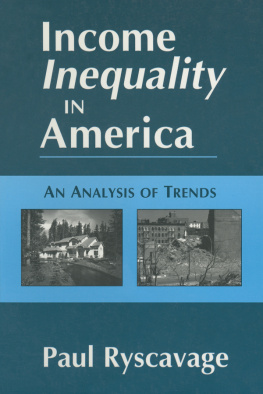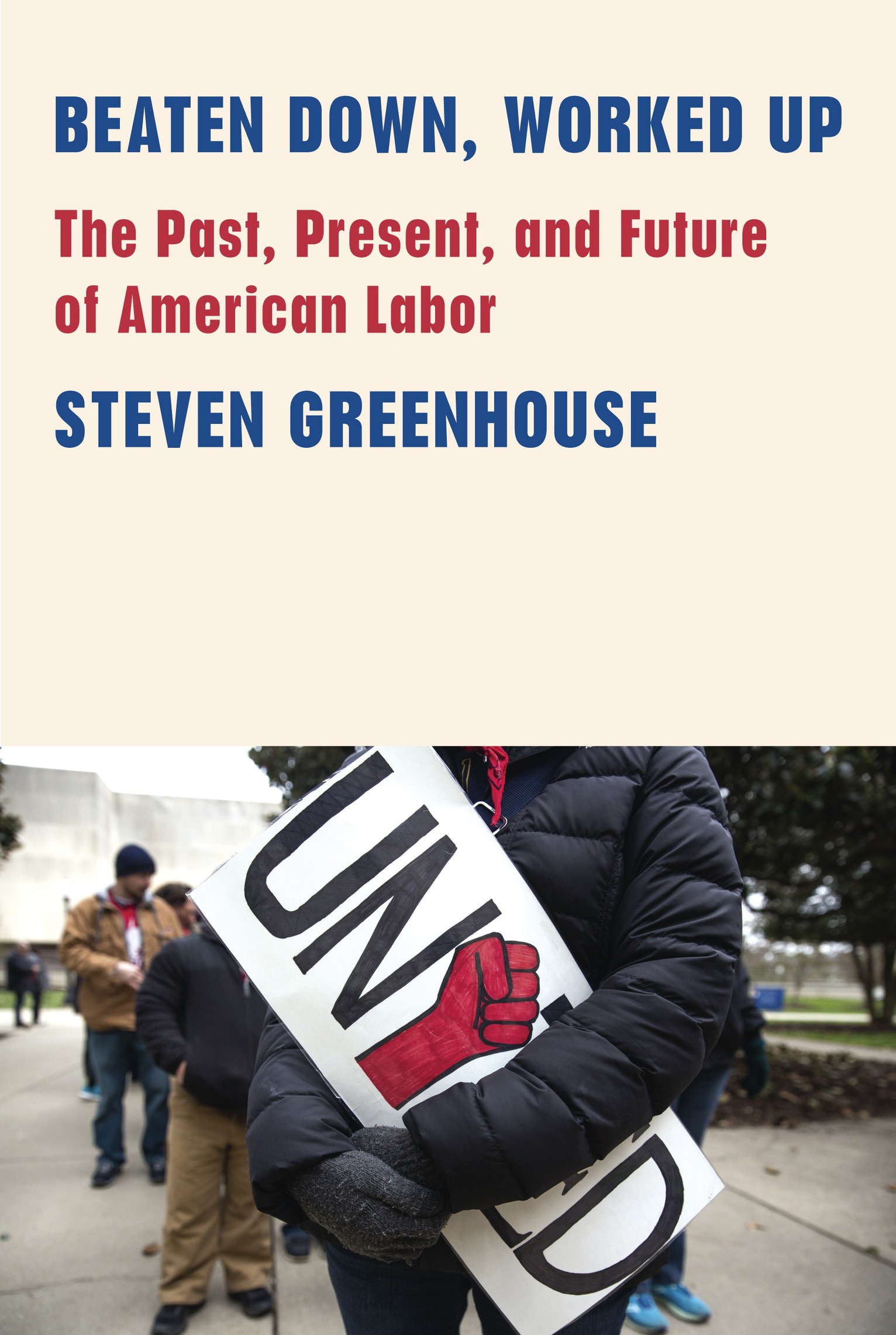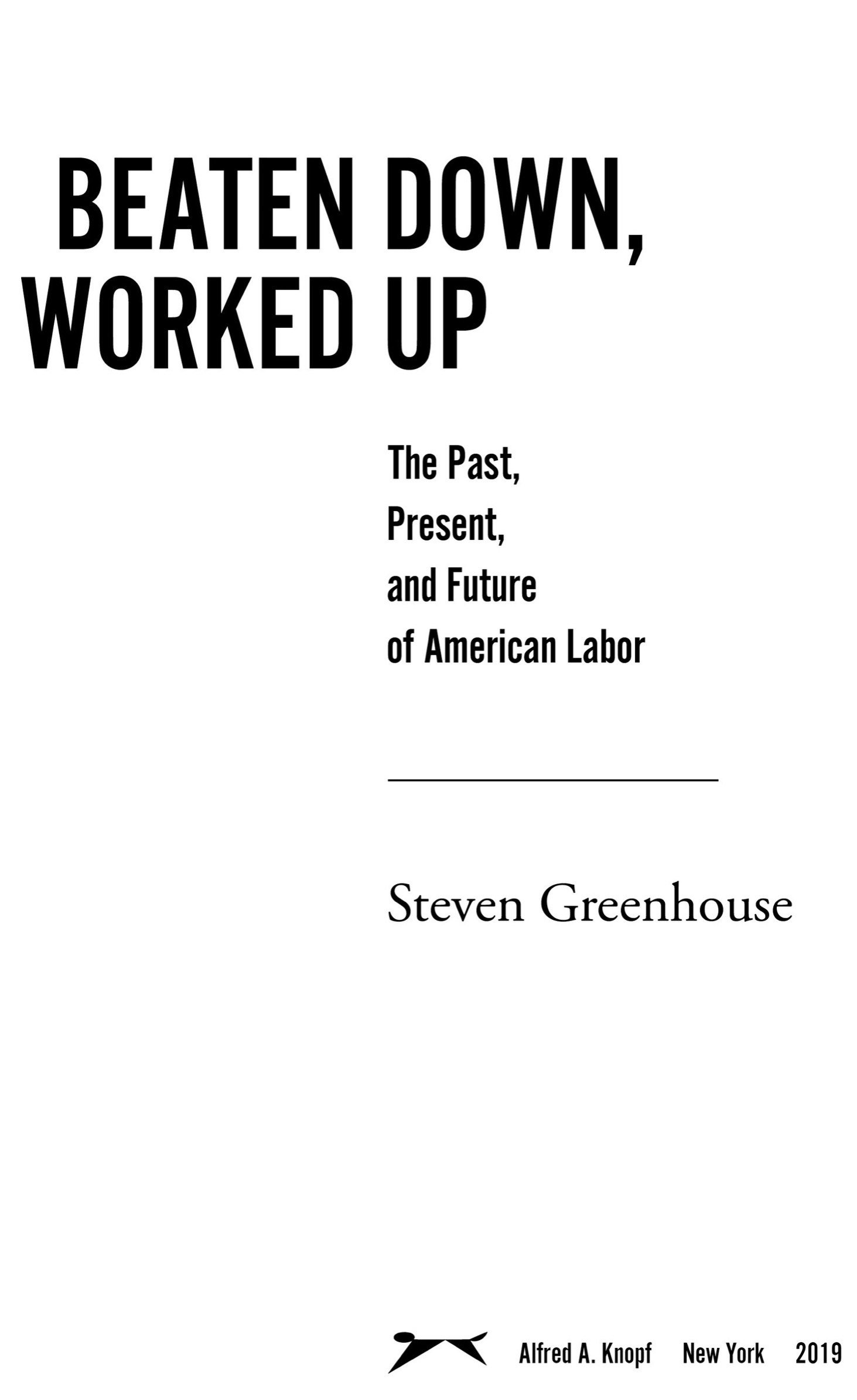A LSO BY S TEVEN G REENHOUSE
The Big Squeeze: Tough Times for the American Worker
THIS IS A BORZOI BOOK PUBLISHED BY ALFRED A . KNOPF
Copyright 2019 by Steven Greenhouse
All rights reserved. Published in the United States by Alfred A. Knopf, a division of Penguin Random House LLC, New York, and distributed in Canada by Penguin Random House Canada Limited, Toronto.
www.aaknopf.com
Knopf, Borzoi Books, and the colophon are registered trademarks of Penguin Random House LLC.
Library of Congress Cataloging-in-Publication Data
Names: Greenhouse, Steven, author.
Title: Beaten down, worked up: the past, present, and future of American labor / by Steven Greenhouse.
Description: First edition. | New York: Alfred A. Knopf, 2019. | Includes bibliographical references and index.
Identifiers: LCCN 2018055786 (print) | LCCN 2018059815 (ebook) | ISBN 9781101874448 (ebook) | ISBN 9781101874431 (hardcover)
Subjects: LCSH : LaborUnited StatesHistory. | Labor unionsUnited StatesHistory. | Labor movementUnited StatesHistory.
Classification: LCC HD 8072.5 (ebook) | LCC HD 8072.5. G 739 2019 (print) | DDC 331.880973dc23
LC record available at https://lccn.loc.gov/2018055786
Ebook ISBN9781101874448
Cover photograph by Scott Heins / Bloomberg / Getty Images
Cover design by Kelly Blair
v5.4_r1
ep
F OR MY WONDERFUL CHILDREN, E MILY AND J EREMY
And for all others in their generation who are fighting to create a better, fairer world
If there is no struggle, there is no progress.
F REDERICK D OUGLASS
The only effective answer to organized greed is organized labor.
T HOMAS R . D ONAHUE,
inauguration speech as AFL-CIO president, August 1, 1995, Chicago
Contents
I NTRODUCTION
Like millions of workers, I was stewing about my pay. It was 1977, and after eighteen months at my first newspaper job, I was earning $220 a week. Many of us reporters were putting in fifty- to sixty-hour weeks, often working from 1 p.m. to 1 a.m., researching and writing stories in the afternoon, covering town council and school board meetings in the evening, and then rushing back to the office to write stories about the evenings events. (Putting in for overtime was frowned uponit could hurt your chances of getting ahead or getting a beat you coveted.)
A few of us discussed what to do about the low pay, and we looked into unionizing. We contacted the Newspaper Guild, and we scheduled a dinner at a local restaurant one Friday night to discuss the idea with a union organizer. If my memory is correct, about sixty reporters, copy editors, and photographers had signed up to attend.
That Friday afternoon, a notice appeared unexpectedly on the newsrooms bulletin board announcing that the newspaper was giving nearly everyone a 20 percent raise. We were thrilled (even though the announcement drained away most of the interest in unionization). That big raise showed what a unionor the threat of a unioncould accomplish. It was an era when unions were far stronger and companies were far more scared of them.
Now, four decades later, labor unions are far weaker. The decline of unions, and of worker bargaining power in general, has taken a toll on our nation. It has contributed to many of the countrys major problems: increased income inequality, wage stagnation, declining mobility, the high number of low-wage jobs, and the skewing of our politics in favor of corporations and wealthy campaign donors.
Millions of Americans know little about what unions have achieved over American history, how the labor movement has played an important, often unsung role in making America the great nation it is today. Labor unions, and their ability to create a powerful collective voice for workers, played a huge role in building the worlds largest, richest middle class. The success of American business of course played a major part as well, but it was unions strikes, and the millions of workers who took to the streets, that pressured companies to share their profits more fairly after World War II. Unions also played a crucial role in achieving many things that most Americans now take for granted: the eight-hour workday, employer-backed health coverage, paid vacations, paid sick days, safe workplaces. Indeed, unions were the major force in ending sweatshops, making coal mines safer, and eliminating many of the worst, most dangerous working conditions in the United States. Factory jobs didnt start as good jobs, one union leader told me. They were shit jobs. People got killed all the time. Unionization caused them to change that. When the labor movement was robust, we as a nation moved toward greater economic and social justice, but with the union movement diminishedand with many billionaires and corporations seeking to cripple it furtherwe as a nation are moving toward more inequality and unfairness.
In the following pages, I tell the history of labor unions and worker power in America, focusing on pivotal episodes that built the union movement and gave workers a true voice and true power that lifted wages and benefits for millions of Americans. I write of key labor leaders and landmark confrontationshuge, riveting dramas in their daylike the women workers Uprising of the Twenty Thousand of 190910, the Flint Sit-Down Strike of 193637, and the Memphis Sanitation Workers Strike of 1968. I also explore the downward arc of the union movement and of worker powerwhy this has been happening and what it has meant for the nation. I explore the factors that have fueled this decline, including globalization, the rise of the atomized gig economy, and corporate Americas war against labor unions. I devote several chapters to major episodes that badly set back labor, including the disastrous air traffic controllers strike of 1981 and Scott Walkers crusade to cripple Wisconsins government employee unions in 2011. As a result of these fights and forces, the United States now has the weakest labor movement of any advanced industrial nation, and thats a major reason why income inequality has grown worse in America than in any other industrialized nation.
Finally, I write about several unusually successful modern-day labor efforts that signal a hopeful path for workersa path to lift wages, increase worker power, and improve jobs as well as workers productivity and morale. I was the first journalist to write about the Fight for $15 when it was just getting started in 2012, and I take a close look at that fight, by many measures the biggest, most successful labor effort in decades. I also examine the Coalition of Immokalee Workers, which has done an astonishing job transforming the once-miserable jobs of tens of thousands of farmworkers. I look at Kaiser Permanentes Labor Management Partnership, probably the nations best example of how management and workers cooperate closely to cut costs, boost efficiency, and improve service, morale, and wages. I also tell of the St. Paul Federation of Teachers, which has blazed a remarkable path, battling not just for teachers but for students, the community, and greater social justice as part of an innovative strategy known as bargaining for the common good.
This is not a detailed, comprehensive history. For that, I recommend such excellent books as Labor in America: A History

